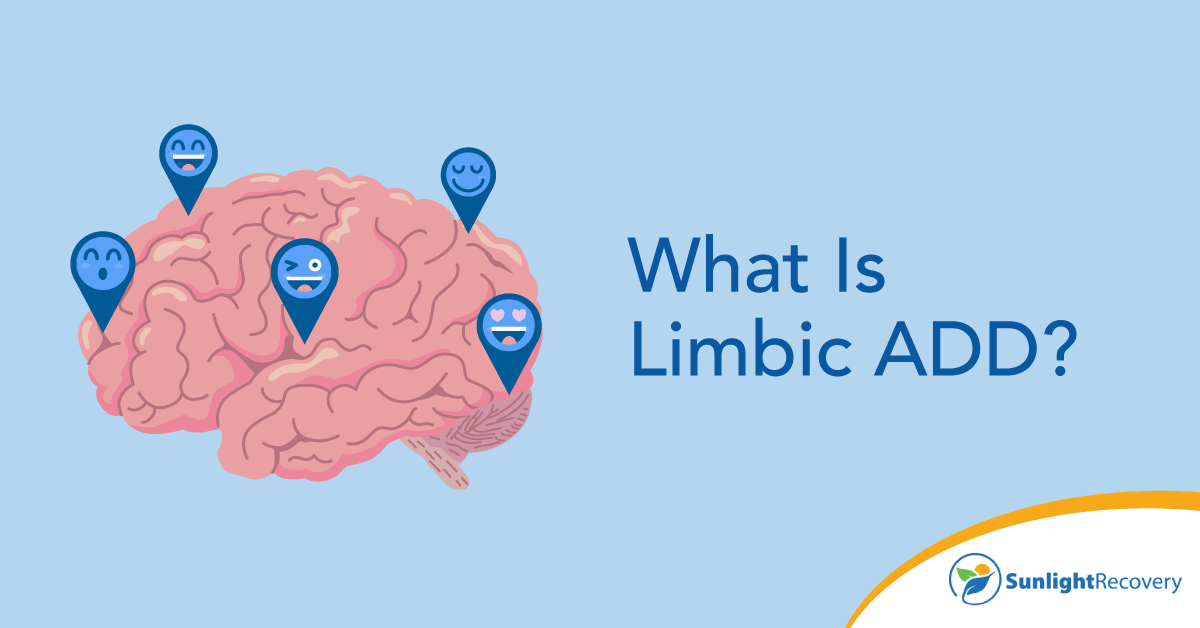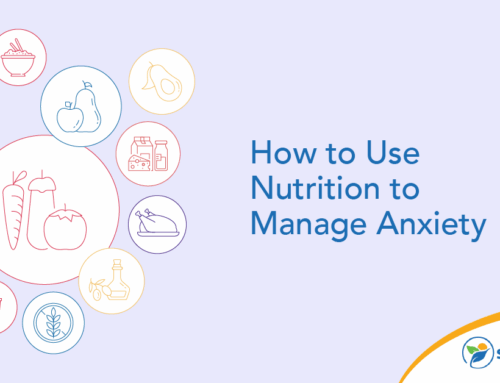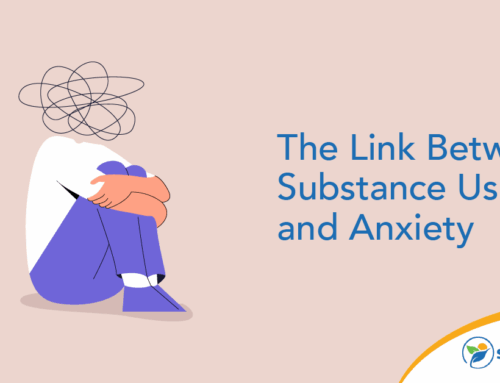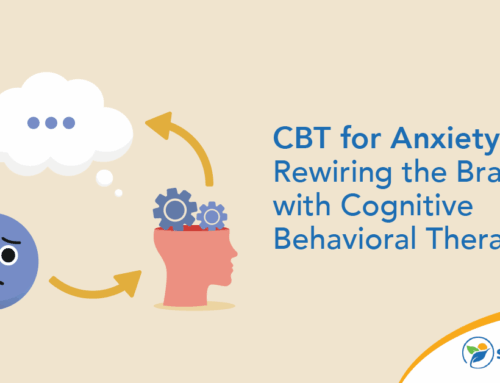Do you find paying attention, staying motivated or boosting self-esteem difficult? You may be suffering from an overactive limbic system, a condition linked to limbic ADD. Limbic ADD can affect your ability to maintain a job, participate in enjoyable activities or connect with others emotionally.
However, with the right guidance, you can learn to manage symptoms and lead a fulfilling life. Explore the effects of limbic ADD, how it differs from other types of ADD and what treatment options are available.
What Is Limbic ADD?
Limbic ADD is a mental health disorder caused by an overactive limbic system and an underactive prefrontal cortex. The limbic system refers to a group of interconnected brain structures, including the amygdala and hypothalamus, that regulate emotions, memory, behavior and motivation. These components work together to process memories, thoughts and emotions, informing your body on how to respond.
A subtype of attention deficit disorder, limbic ADD combines typical ADD symptoms and mood-related symptoms similar to those associated with depression. Limbic ADD is sometimes misdiagnosed as depression, but mental health professionals can use a person’s developmental history to distinguish the two conditions.
Common Limbic ADD Symptoms
Individuals with limbic ADD often experience core ADD symptoms, including difficulty focusing, impulsivity, forgetfulness and disorganization. However, the condition also produces mood-related symptoms such as:
- Feelings of sadness or hopelessness
- Low self-esteem
- Low energy or motivation
- Loss of interest in pleasurable activities
- Social withdrawal or isolation
- Moodiness and negativity
- Perceived helplessness
- Irritability
- Emotional sensitivity
- Poor sleep patterns
Individuals with limbic ADD typically display normal brain activity while at rest. However, certain brain structures, including the basal ganglia and cerebellum, show reduced activity when concentrating on tasks.
Differences Between Limbic ADD and Other Types of ADD
ADD and ADHD are some of the most commonly diagnosed mental health conditions. According to CDC research, an estimated 11.4% of U.S. children have ADD or ADHD as of 2022, with boys displaying higher diagnosis rates than girls. There are seven types of ADD, each with its own set of symptoms and behaviors. Explore how limbic ADD compares to other common ADD diagnoses.
Limbic ADD vs. Classic ADD
Classic ADD involves hyperactivity, inattentiveness, impulsiveness and forgetfulness. Individuals with this diagnosis are often restless, talkative and demanding. Limbic ADD can cause similar symptoms. However, people with limbic ADD can be quiet and withdrawn, while those with classic ADD don’t commonly display these behaviors.
Limbic ADD vs. Anxious ADD
Anxious ADD stems from low prefrontal cortex activity and an increased basal ganglia response. Individuals often exhibit frequent anxiety and nervousness. They fear being judged and avoid situations that trigger anxious feelings, such as public speaking or social events.
Limbic ADD also drives people to avoid social situations or conflict. However, this behavior comes from a lack of energy or interest, not anxiety or fear.
Limbic ADD vs. Temporal Lobe ADD
Temporal lobe ADD combines classic ADD symptoms with aggression, mood instability and a quick temper. It commonly causes memory or learning issues, mild paranoia, confusion and dark or panicked thoughts.
Limbic ADD can trigger similar dark or negative thoughts. However, it doesn’t produce violent, aggressive or confused behavior. Individuals are more likely to suppress their emotions than lash out.
Impact of an Overactive Limbic System on Mood and Behavior
The limbic system facilitates motivation, drive and emotional connection. Because limbic ADD affects these functions, it can impact mood and behavior in several ways.
Mood Effects
Limbic ADD produces mood-related symptoms that can contribute to:
- Chronic low mood. You may experience persistent feelings of sadness or hopelessness without a triggering event. These feelings can create negative or self-critical thought patterns.
- Low energy and motivation. Limbic ADD causes a noticeable lack of energy or motivation. You may feel tired, sluggish or apathetic.
- Emotional sensitivity. Mood instability and emotional sensitivity are also linked to limbic ADD. You may experience a low threshold for minor stressors or emotional pain, becoming easily irritable or tearful.
Behavior Effects
The low mood, lack of energy and negative thoughts associated with limbic ADD can influence harmful behaviors, including:
- Reduced productivity. Low mood and motivation can make starting or completing tasks more difficult, even if you usually enjoy them. You may frequently procrastinate and fail to fulfill work, school or personal obligations.
- Lack of focus and attention. Because limbic ADD also causes certain classic ADD symptoms, you may struggle to focus or concentrate. This can make staying on task or making decisions challenging.
- Increased self-sabotaging. Negative thought patterns, self-talk or emotions can trigger self-sabotaging behaviors, such as avoiding career opportunities or failing to care for yourself. You may engage in destructive behaviors that reinforce feelings of inadequacy or failure, creating a cycle of toxic thoughts and actions.
Relationship Effects
These mood and behavior effects combined can make maintaining relationships difficult. You may withdraw from loved ones and avoid social situations due to feelings of sadness, irritability or low self-esteem.
The self-isolation and negative thinking can strain interpersonal relationships. Your friends and family may find interacting with you challenging, especially if you frequently cancel plans or appear disinterested during conversations.
Common Limbic ADD Treatment Options and Management Strategies
Limbic ADHD treatment involves a combination of medication, therapy and lifestyle changes to manage unpleasant symptoms. A doctor may prescribe a stimulant to target core ADD symptoms and an antidepressant or a mood stabilizer to improve emotional regulation.
During therapy, you work with a licensed therapist to identify and challenge negative emotions or thought patterns to reduce their effects on your behavior and relationships. Therapy can also help you develop healthy coping strategies to improve reactions to stressful or emotional situations.
Additionally, mindfulness and relaxation techniques can boost emotional regulation, attention and concentration. Other lifestyle changes, such as eating healthy and maintaining a regular sleep schedule, can help manage mood fluctuations and poor sleep.
Seek Treatment With Sunlight Recovery
Living with limbic ADD can be difficult, but help is available. Sunlight Recovery offers comprehensive ADD and ADHD treatment, including medication and therapy, to encourage more positive, productive thinking. Get the support you need to lead a more fulfilling life. Contact Sunlight Recovery today to speak with a compassionate counselor and learn more about our services.







